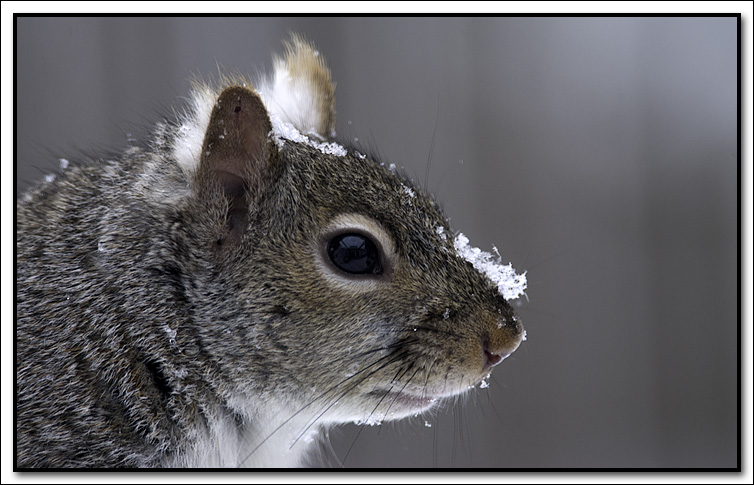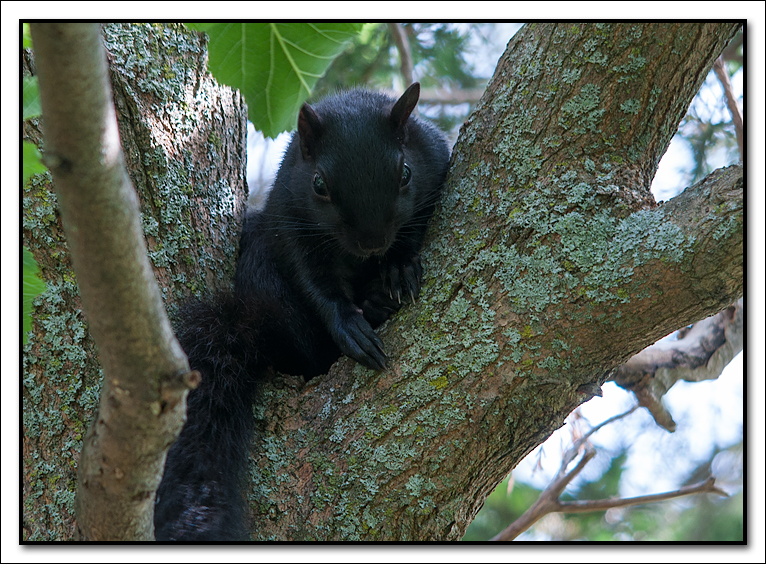Eastern Grey Squirrel
Eastern Grey Squirrel (Sciurus carolinensis)
Anybody in an urban neighbourhood in Southern Ontario would be familiar with Grey Squirrels. And if you have a bird feeder in your yard, you probably know how smart these rodents can be.
Grey Squirrels come in a few different colours as you can see by the images below. The black phase is called a Melanistic eastern grey squirrel. Some are grey with white bellies and some are all grey. Then there’s the blond Grey Squirrel that may be leucistic. Black squirrels are the dominant colour phase in Ontario and Quebec. Farther south the black phase is less common and is not found at all in the southern United States. We have a friend in New York State who mentioned that he has never seen a black squirrel. Young first year squirrels are usually easy to identify because of their perfect shinny fur. Older squirrels have a much more worn look to them. In the winter, their fur coat is noticeably thicker.
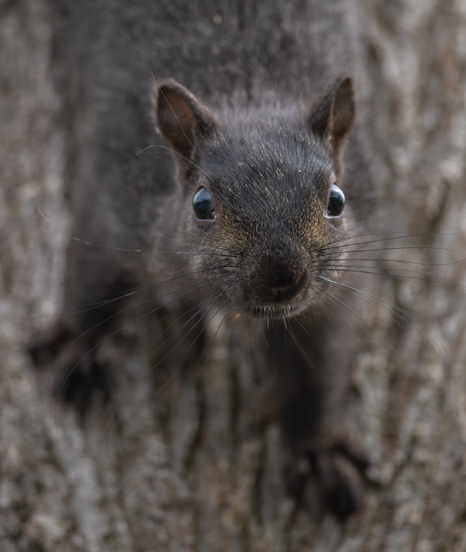 The squirrel's most striking feature is its bushy tail which has multiple functions. It acts as a rudder and aids in balancing when it runs, climbs and jumps. The tails can be used to shade them in the sunny warm weather and used as a wrap to keep them warm during the cold weather. The tails area also used for communication and signalling. When in distress or when there's danger around, such as a cat or hawk, they will shake their tails frantically and be quite vocal with a moaning “quaa” sound.
The squirrel's most striking feature is its bushy tail which has multiple functions. It acts as a rudder and aids in balancing when it runs, climbs and jumps. The tails can be used to shade them in the sunny warm weather and used as a wrap to keep them warm during the cold weather. The tails area also used for communication and signalling. When in distress or when there's danger around, such as a cat or hawk, they will shake their tails frantically and be quite vocal with a moaning “quaa” sound.
The eastern grey squirrel generally breeds twice a year. We notice them getting frisky in January and February when we see males chasing the females through the trees. It can be quite a comical sight. The second mating season is in June and July.
The females commonly give birth to three to five babies. The newborn kits are naked and blind and very tiny. There can be grey and black squirrels in the same litter. We have accidentally disturbed a nest that was in our shed. That morning, the mother carried each young kit one by one to a new and safer place in our neighbour’s shed.
The kits mature quickly. By the time they are eight weeks old they start coming out of the nest with their mother. By twelve weeks they are fully independent.
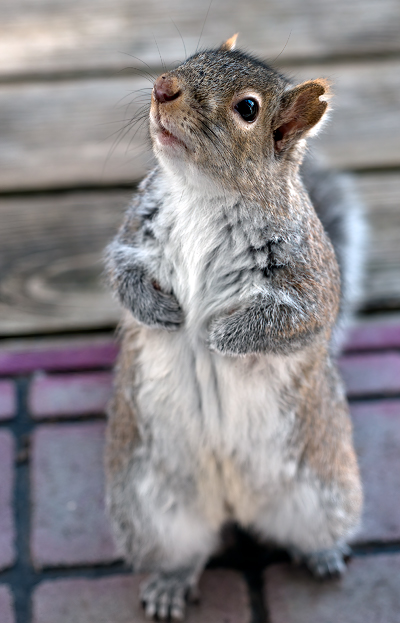 Eastern grey squirrels have a varied diet. Spring preferences are buds from deciduous trees, especially those from maples. Summer diet includes seeds, wild berries, fruits, and nuts and tree nuts in the fall. In the Fall they prepare for winter by burying seeds and nuts. While not all of their buried food items will be found, their keen sense of smell allows them to recover most of them. Because of the hoarding behaviour, squirrels are important natural forest regenerators. In residential areas, squirrels will also take advantage of bird feeders to supplement their winter diet.
Eastern grey squirrels have a varied diet. Spring preferences are buds from deciduous trees, especially those from maples. Summer diet includes seeds, wild berries, fruits, and nuts and tree nuts in the fall. In the Fall they prepare for winter by burying seeds and nuts. While not all of their buried food items will be found, their keen sense of smell allows them to recover most of them. Because of the hoarding behaviour, squirrels are important natural forest regenerators. In residential areas, squirrels will also take advantage of bird feeders to supplement their winter diet.
In addition to these vegetative sources, eastern grey squirrels will feed on insects and sometimes even bird eggs and young. We often see them being chased by angry American Robins and Grackles who are protecting their nests.
In the forest, their predators include red foxes, fishers, bobcats, lynx, weasels, hawks and owls. Babies are also preyed upon by red squirrels, snakes, and raccoons. In urban environments, they can be attacked by domestic cats and dogs, but the main cause of unnatural death would probably be automobiles.
Squirrels can become real pests. They can nest in your attic, eaves, garage or shed causing a terrible mess and even extensive damage. They dig up your bulbs in your gardens, chew up your freshly blooming flowers, tear through your beautiful planters. They can chew outside wires and sharpen their teeth on the wood of your house and deck. Our deck has bite marks all over and they have destroyed every attempt we have made to put strings of lights on our deck. They also leave a mess and cause staining when eating walnuts on our deck, railings and stairs.
They cause quite a mess in our backyard, digging holes in the lawn and garden. Unless you squirrel proof your bird feeders and use rodent proofing techniques, they will pilfer your bird seeds or even destroy the feeders.
However, they are can be very friendly and a pleasure to watch as they go about the lives.
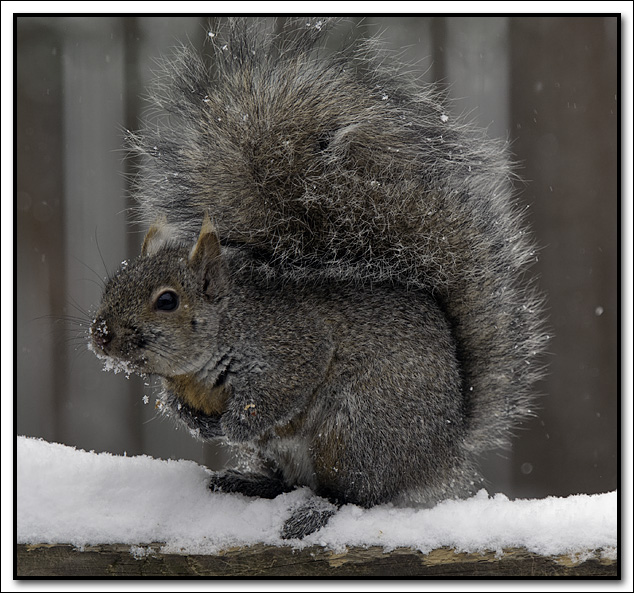
TheEastern Grey Squirrel can use its fluffy tail as a cover or for added warmth during the cold winter months.
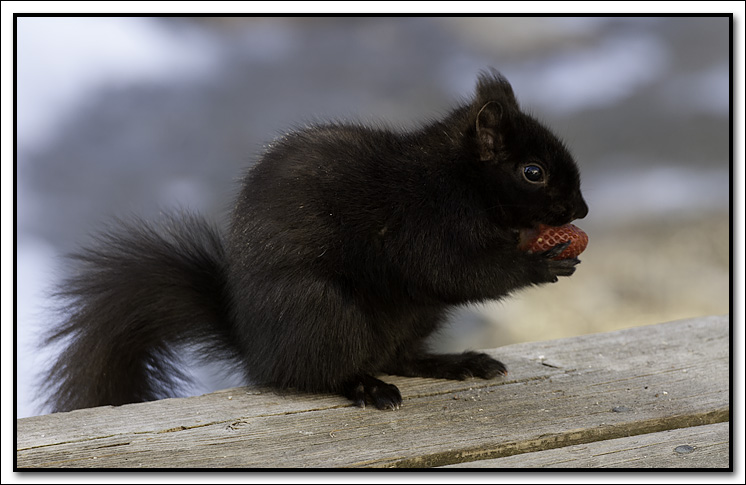
Young squirrels have beautiful smooth coats.
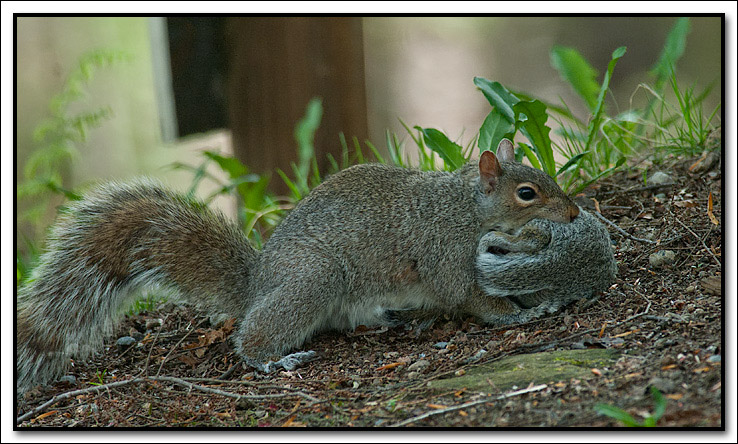
Mother squirrel transporting one of her offsprings to a new nesting location.
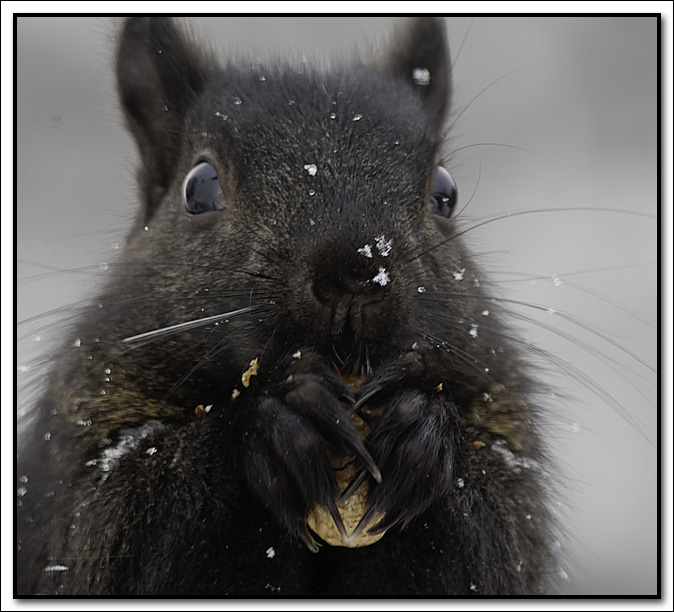
Eastern Grey Squirrel showing his long claws that make climbing very easy.
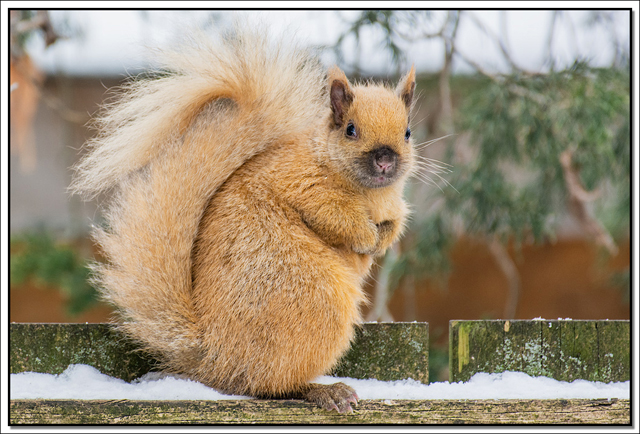
A blonde Eastern Grey Squirrel is a genetic anomally. It is caused by leucism, which is a reduction in all types of skin pigment, not just melanin.
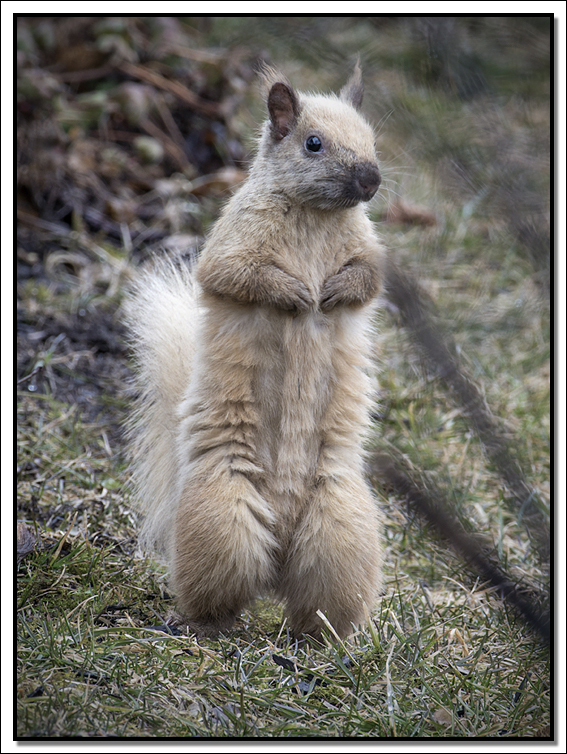
A blonde Eastern Grey Squirrel with his winter fur.
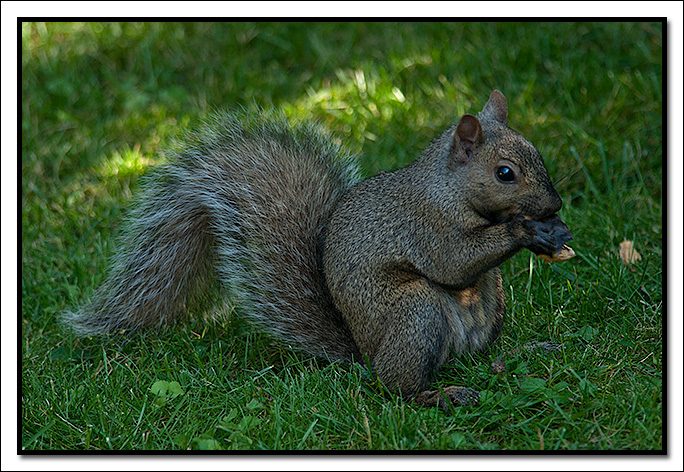
While most Eastern Grey Squirrels that are the grey phase have white aroud their eyes, ears and nose with white bellies . This one, however, is completely grey.
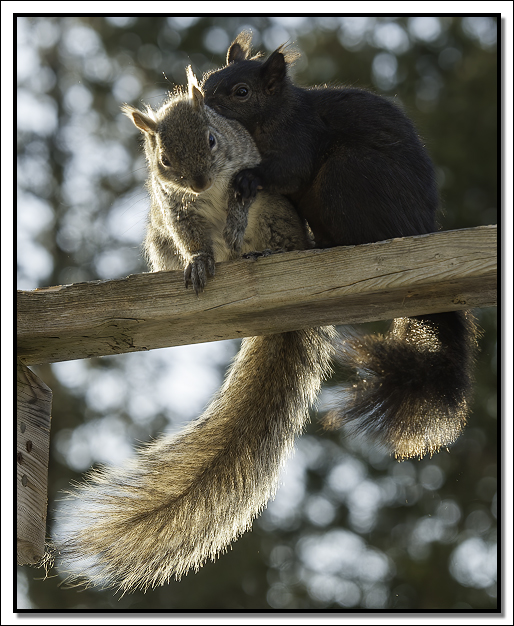
A couple of Eastern Grey Squirrels getting to know each other during the breeding season.
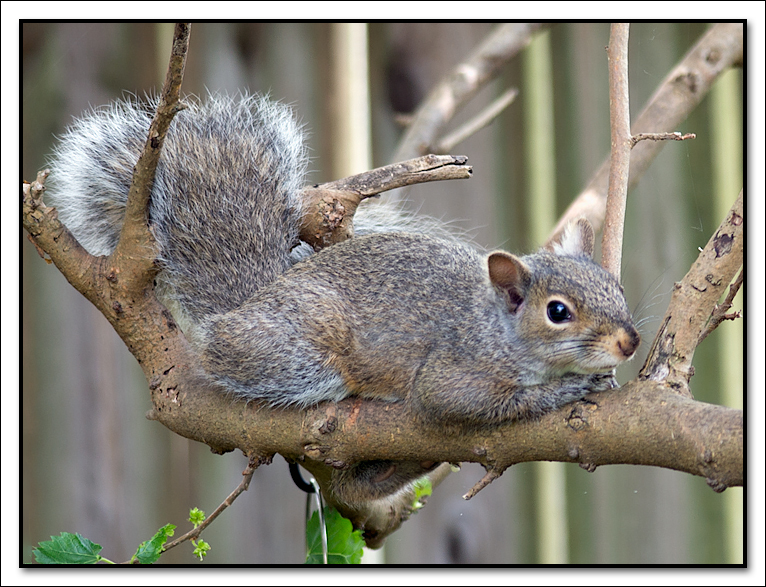
Looking rather comfortable
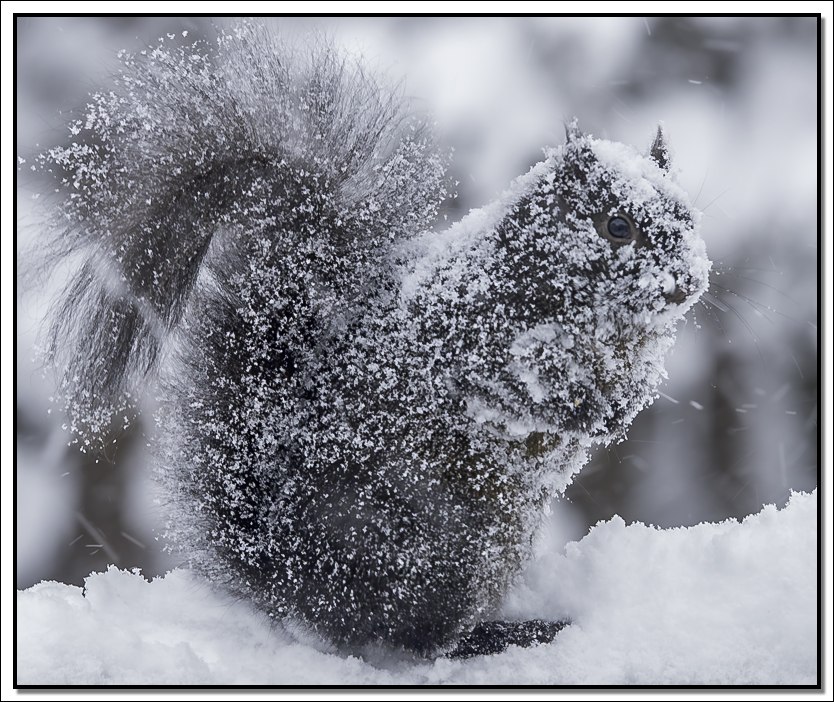
Eastern Grey Squirrels don't hibernate and are active all year.
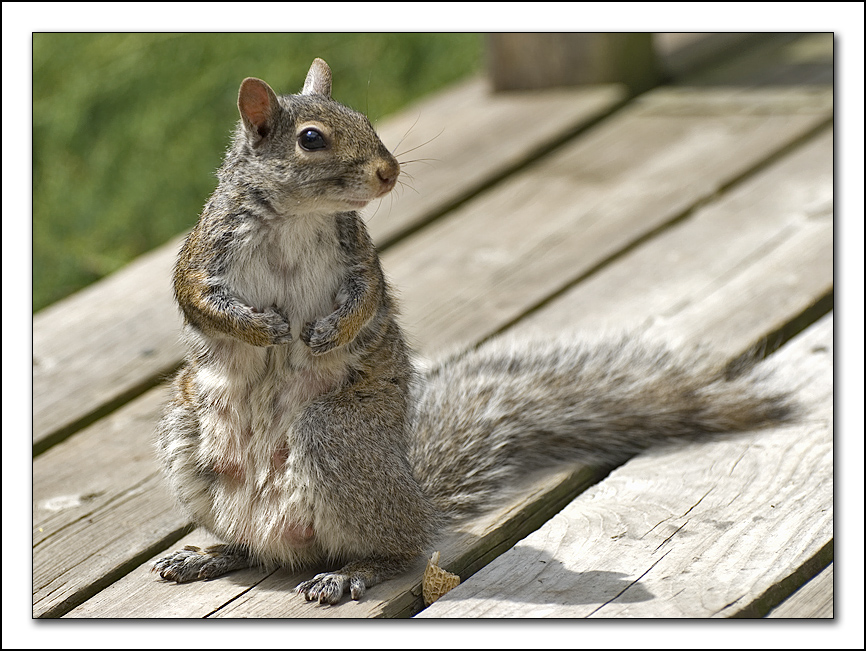
Mother Grey hanging out on our backyard deck.
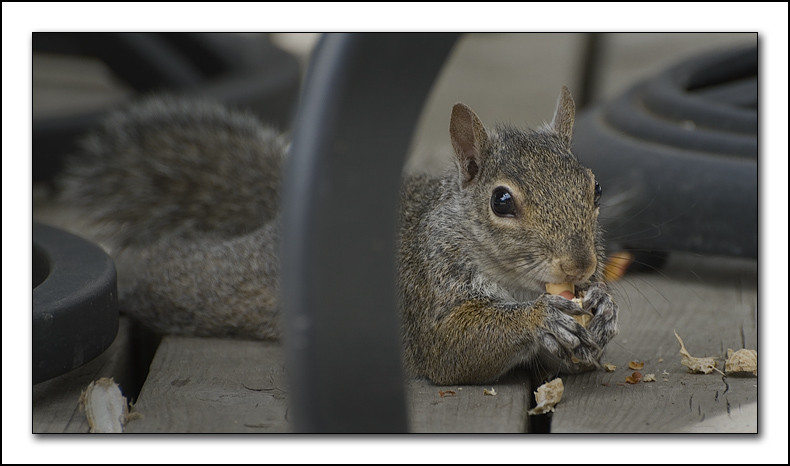
Eastern Grey Squirrels love peanuts just as much as the Jays.
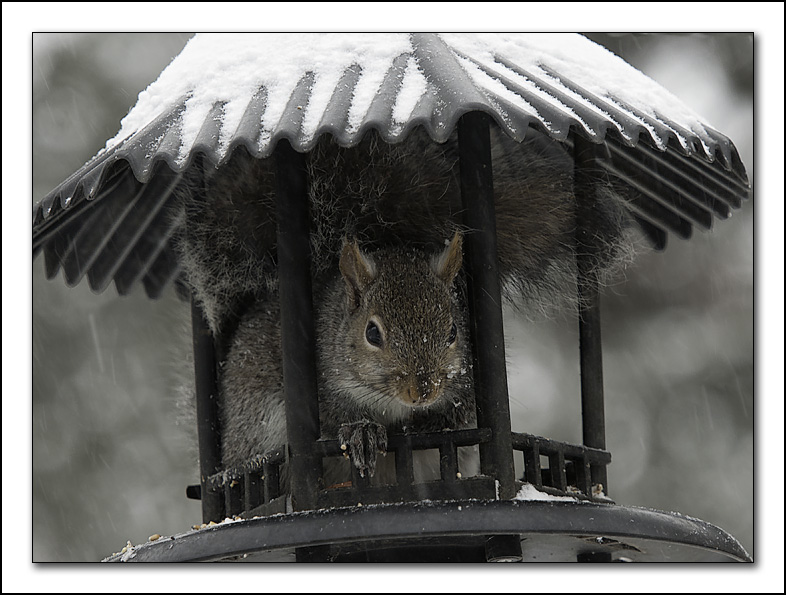
Eastern Grey Squirrels are very acrobatic and can come up with all kinds of ways to raid bird feeders.
